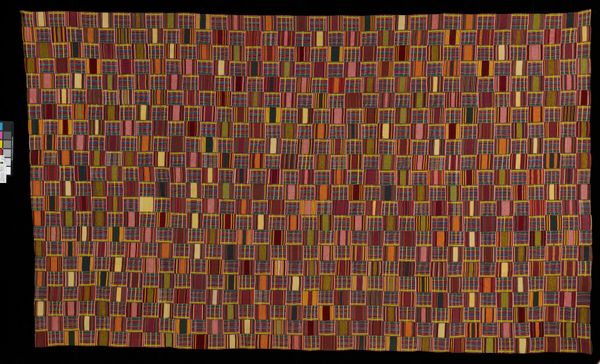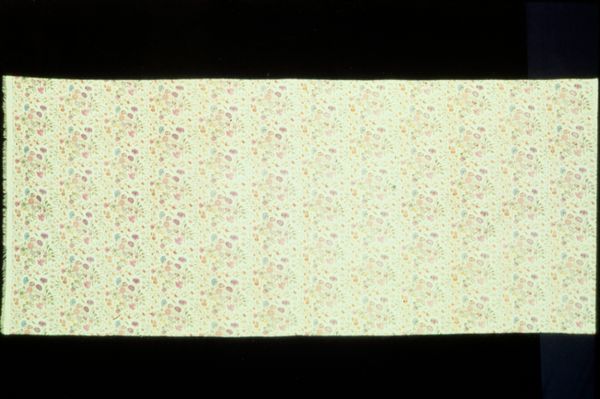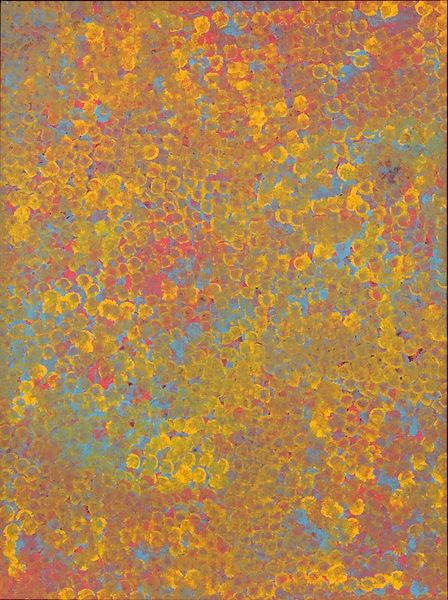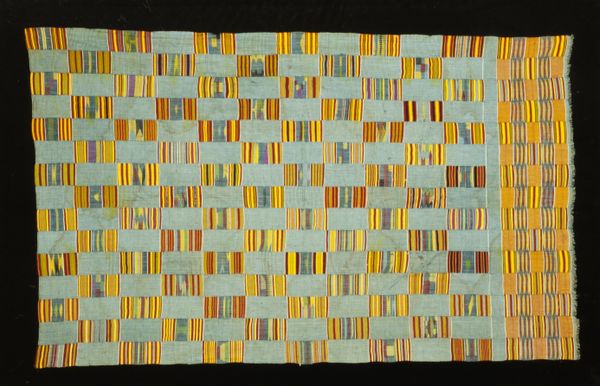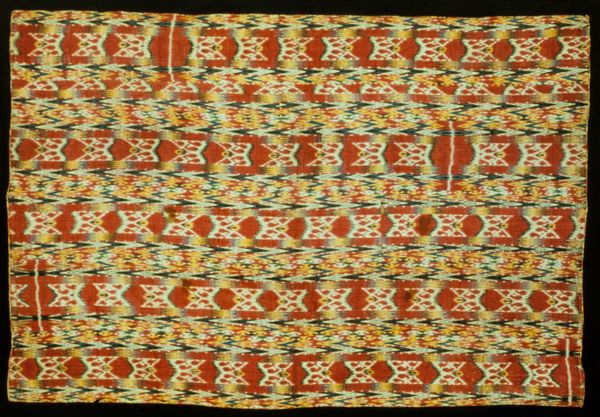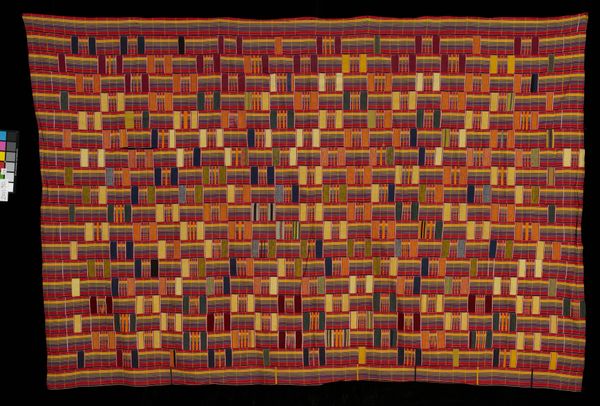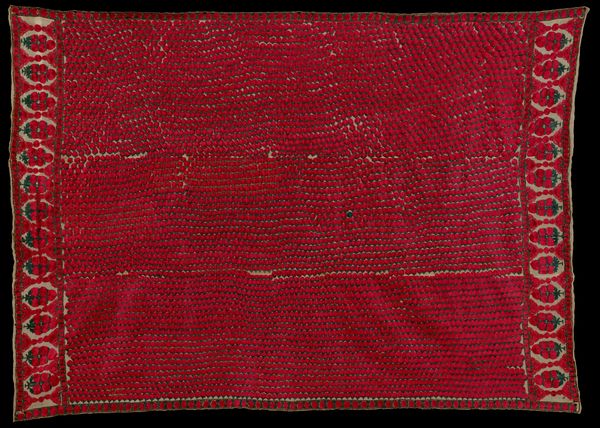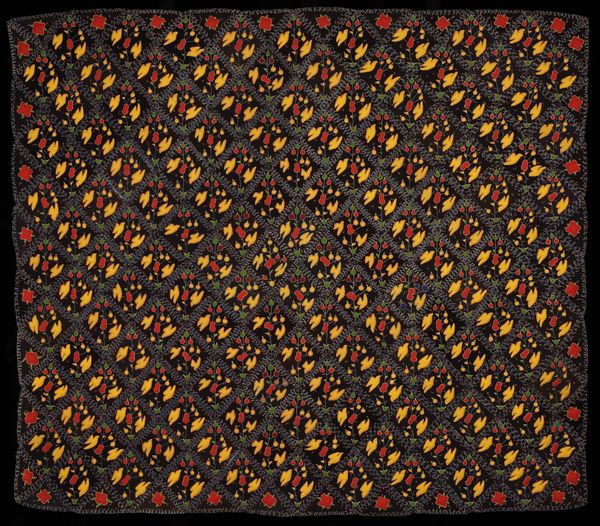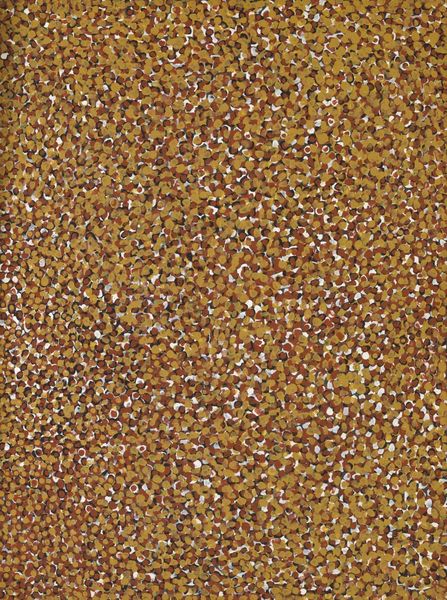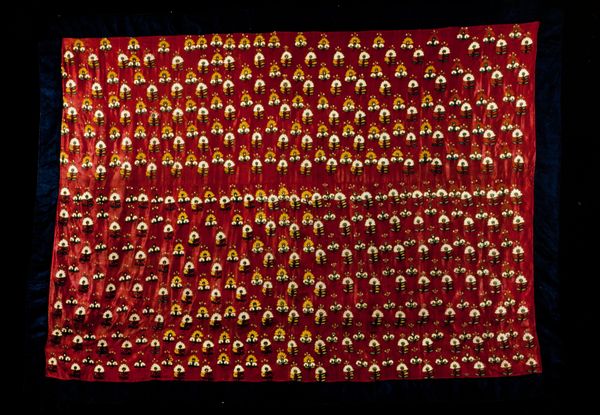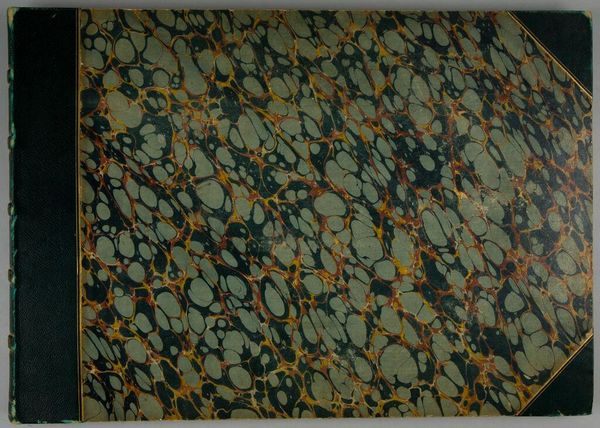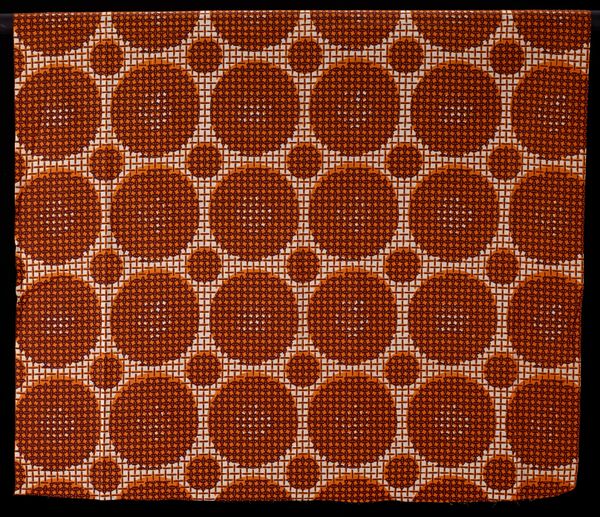
textile, cotton
#
naturalistic pattern
#
pattern
#
textile
#
geometric pattern
#
abstract pattern
#
organic pattern
#
geometric
#
repetition of pattern
#
vertical pattern
#
pattern repetition
#
cotton
#
layered pattern
#
combined pattern
Dimensions: 94 1/2 x 43 1/2 in. (240.03 x 110.5 cm)
Copyright: Public Domain
Curator: This striking textile, simply titled "Sertah," dates from around the 20th century and is crafted from cotton. What catches your eye first about it? Editor: It's undeniably captivating. The earthy color palette combined with the precise grid of squares gives it this almost soothing visual rhythm. It feels both familiar and somehow ancient. Curator: Precisely! The structure is fascinating; notice the grid formed by fine stripes, then consider how within each square there's another, smaller colored square offset towards the center. That must have been a laborious technique. Editor: I immediately think of the tradition and labor that's been poured into creating the cotton. This object isn't just decorative; it embodies stories of craft, identity, and community practices passed down through generations. Are these types of textiles still produced? What do they mean to the makers? Curator: Those are important questions! While precise information about the makers is limited, understanding the process, its origins, and social context allows us to appreciate the craftsmanship inherent in these textiles—think of all the steps in obtaining raw materials, hand-dyeing the cotton threads, creating a loom. Each step could imply division of labor, resource availability. It also speaks to the complex relationship between functionality, material, and form. Editor: It certainly broadens the story this textile is telling. These objects hold immense cultural significance that are too easily ignored in art history discourse, aren't they? We often prioritize singular "artistic genius" over communal, labor-intensive forms of expression, specifically in arts that come from the non-Western world. Curator: Absolutely. Reflecting on Sertah's materiality and technique allows us to question conventional aesthetic hierarchies. This piece challenges assumptions about what art *is* by celebrating process and collective creation, and its very existence encourages discussions about value in artistic expression. Editor: For me, this re-evaluation of artistic labor is where true meaning lies, prompting us to consider the social and cultural exchanges that underpin all forms of art. Curator: Indeed. Looking closely at "Sertah," it shows there is something truly empowering about everyday textiles. Editor: Agreed. It gives us an avenue to honor untold stories of marginalized artists, designers, and laborers who are critical to global narratives of cultural expression.
Comments
No comments
Be the first to comment and join the conversation on the ultimate creative platform.
